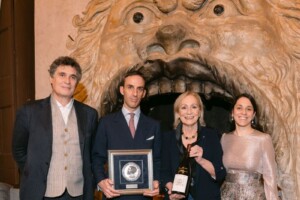It is hard not to agree with Professor Mario Fregoni of the Università Cattolica Sacro Cuore di Piacenza, according to whom, “the historic Doc wines uphold the image of Italian wines abroad, however, not that strongly”. And it is hard to ignore the fact that this fundamental role is played by all Doc wines. This may be the biggest factor in the debate over how useful Doc/Docg guarantees actually are.
Over the years, the Italian wine sector has long been propelled towards these guarantees of origin (first introduced in 1963 with norm Dpr 930) and this move became a decisive factor in relieving Italy of the stereotype of producing mass wine, according to Lapo Mazzei of Castello di Fonterutoli.
But it is also true that these first territorial denominations sparked a proliferation of requests for guarantees, turning into a sort of indiscriminate race to cover the entire national territory, as if the guarantees represented an end rather than a means. Meanwhile, wine entrepreneurs began orienting their choices towards this, even those outside of the denominations, but were not always capable of keeping up with the times, especially because of obsolete and rigid disciplines.
This is how, for one example, the success of Super Tuscans came about (they were originally table wines that were not given the Igt denomination until 1992 with the introduction of Law 164 “New discipline for denominations for the origins of wines”), and it also marked the “return” of the most famous of all denominations, Sassicaia, Doc since 1994.
A fluid situation, though not clearly defined - where Italian wine did not know how to make a clear choice, letting the “genius loci” and territory exist alongside varietal wines of undetermined origins - which when the market was experiencing a real boom, it did not give any signs of its intrinsic weakness. But the current crisis has brought out the knots that were never undone (primarily represented by the difficulties of many companies, even among the most important, to declare what side they were on, or rather, what their real goals were), demonstrating, on the one hand, clear signs of the difficulties that Italian wines without denominations (more sensitive to changes in “trends” and thus more “adapted” for commercial politics of medium-short duration) had on the international market that has been “invaded” by the so-called New World products (more competitive price wise, as well as for the absence of regulations they have to follow), and on the other hand, ever more encouraging signs for Doc/Docg wines, at lest for those pertaining to historic denominations (capable of “confronting” medium-long term periods).
But if “the Italian denominations still represent a ‘birth certificate’, but not a ‘guarantee’”, as Daniele Cernilli, co-director of Gambero Rosso, notes, then it is still necessary for modernization in terms of regulations, guarantees (there are still investigations underway over the commercialization of false Doc wines), and simplification (for example, adopting “macro-zones” as done in the French system). This series of interventions also passes through the modification of law 164/1992, interrupted by the recent change of government.
According to Laura La Torre, a manager within the Ministry of Agricultural Politics and legislative director for the wine sector, “the Ministry will do all it possibly can to increase the potential of the so-called decree “erga omnes” that represents the mandatory subscription to guaranteeing consortiums and will require the introduction of more rigid rules for choosing new, besides the application of 164, which foresees the cancellation of denominations that have not been “claimed” (about 200 Doc wines risk “extinction” according to data from Federdoc)”.
Almost this entire discussion has emerged from the two day event at San Gimignano titled “The 40 years of Doc. Past, present, and future, in Italy and the world”, organized by the Consortium of Denominations San Gimignano, which celebrated this year the 40 year anniversary of the denomination Vernaccia di San Gimignano.
Copyright © 2000/2025
Contatti: info@winenews.it
Seguici anche su Twitter: @WineNewsIt
Seguici anche su Facebook: @winenewsit
Questo articolo è tratto dall'archivio di WineNews - Tutti i diritti riservati - Copyright © 2000/2025








































































































































































































